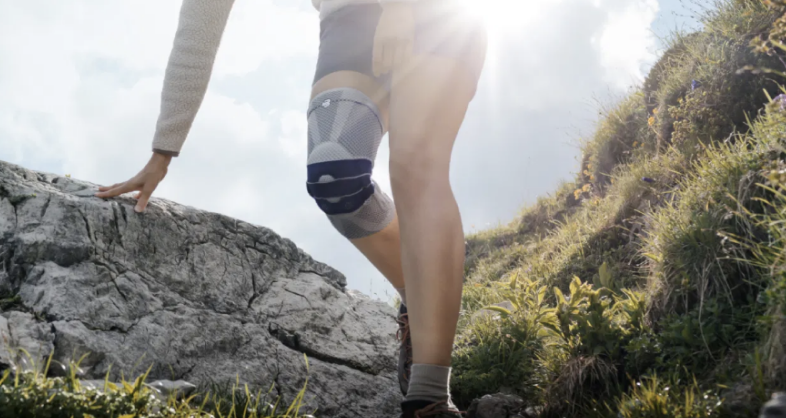
Knee Ligament Injuries
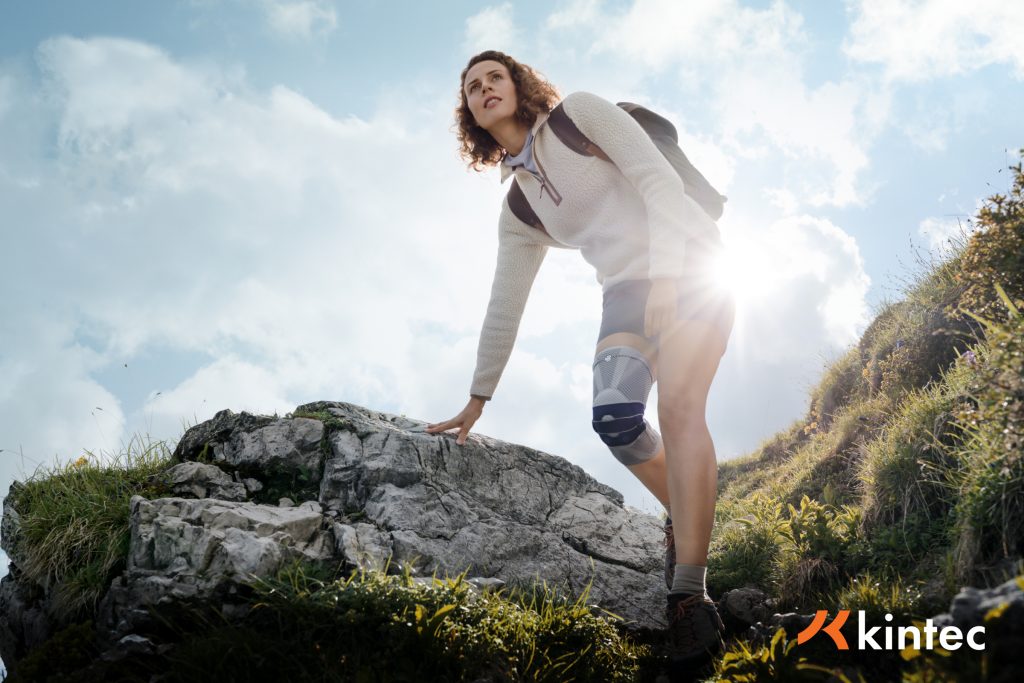
Choosing the right knee brace for you
The knee is one of the most complex joints in the body and therefore susceptible to many types of injuries – especially in athletes and people active on their feet.
Ligament injuries are among one of the most common types of knee injuries and tend to occur from a sudden change in direction or a direct blow to the knee. If you’ve experienced a knee ligament injury, you know how much this can interfere with your life and limit your activities. The good news is there are many bracing options available to help relieve your pain, provide stability and prevent re-injury.
What are the 4 knee ligaments?
Ligaments are bands of soft-tissue that connect bones to each other to increase joint stability. A typical or healthy knee will have four ligaments connecting the tibia (shorter bone of the lower leg/shin) to the femur (long bone of the upper leg/thigh). They are the anterior cruciate ligament (ACL), medial collateral ligament (MCL), lateral collateral ligament (LCL), and posterior collateral ligament (PCL). These tissues work in coordination with one another to help stabilize the knee and allow for proper joint motion during walking and running. The ACL and PCL help stabilize the knee and prevent excess forwards and backwards movements of the tibia, relative to the femur, while the MCL and LCL control sideways motions of the knee. The meniscus is a piece of tough, rubbery cartilage that acts as a shock absorber and sits in the space between both the femur and tibia, on both medial and lateral sides of the knee.
Common mechanisms of injury (tears/ruptures) for each ligament
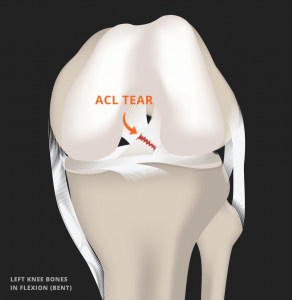
ACL
An unsuspecting ‘plant-and-pivot’ type of movement resulting in the knee buckling and rotating inwards. Also commonly injured during a sudden and forceful forward displacement of the tibia (such as falling backwards on skis)
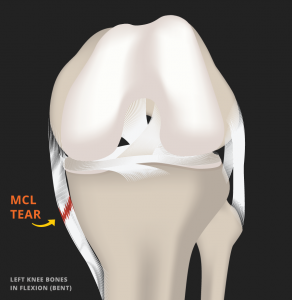
MCL
A direct blow to the outside or lateral side of the knee;
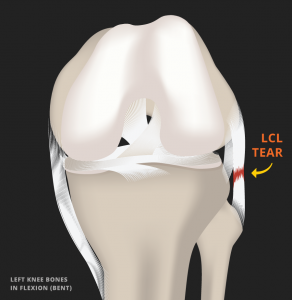
LCL
A direct blow to the inside or medial side of the knee, or from excessive rotational forces of the knee while the foot is planted;
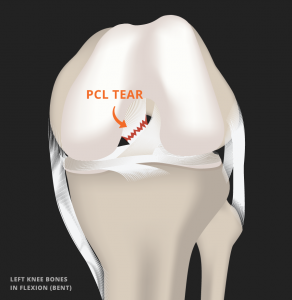
PCL
When a force is applied to the front of the shin when the knee is flexed or from hyperextension of the knee joint.
Bracing options for knee ligament injuries
Wearing a knee brace can help provide pain relief and promote recovery by stabilizing the knee, providing compression and a feeling of support. The type of brace you need will depend on what ligament is damaged and the severity of your injury.
Compression-Based Knee Sleeves are often characterized by their lightweight, breathable construction and designed to provide compression to the knee. Sometimes a medical grade compression is required to help reduce swelling or fluid buildup. These types of knee braces help to improve range of motion in the knee and increase proprioceptive awareness; meaning you have greater awareness of your joint’s position and when that joint moves outside of normal limits. A sleeve-type knee brace is an excellent option if you’re looking for a light to medium support, but it’s important to note it does not provide direct, external support if the knee moves outside of normal limits.
This type of knee brace is available in multiple sizes and can be purchased as an off-the-shelf item, or custom made to your unique measurements.
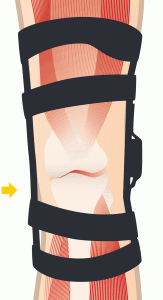
Hinged Knee Braces are designed with more rigid components in the frame and use a strategic configuration of strapping and hinges to provide an enhanced feeling of stability. Hinged braces are designed to provide compression, proprioception and limit excess movements in the knee. They will also provide a greater sense of support for side-to-side and forwarding bending motions than sleeve-based designs. There are multiple off-the-shelf options that provide immediate and lower-cost options for knee support. For maximum stability, a custom-made brace that is made to your specific anatomical measurements is recommended.
Do you need a Knee Brace?
Talk to a Brace Fitting Expert!
Our team of bracing specialists will develop a personalized treatment plan to help reduce pain and promote recovery.
We will educate you on the different bracing options for your specific knee ligament injury while having you try them on. They will also discuss other treatment options, including custom foot orthotics or supportive footwear.

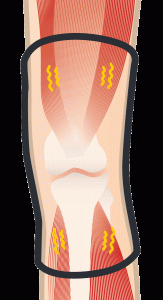
No Comments